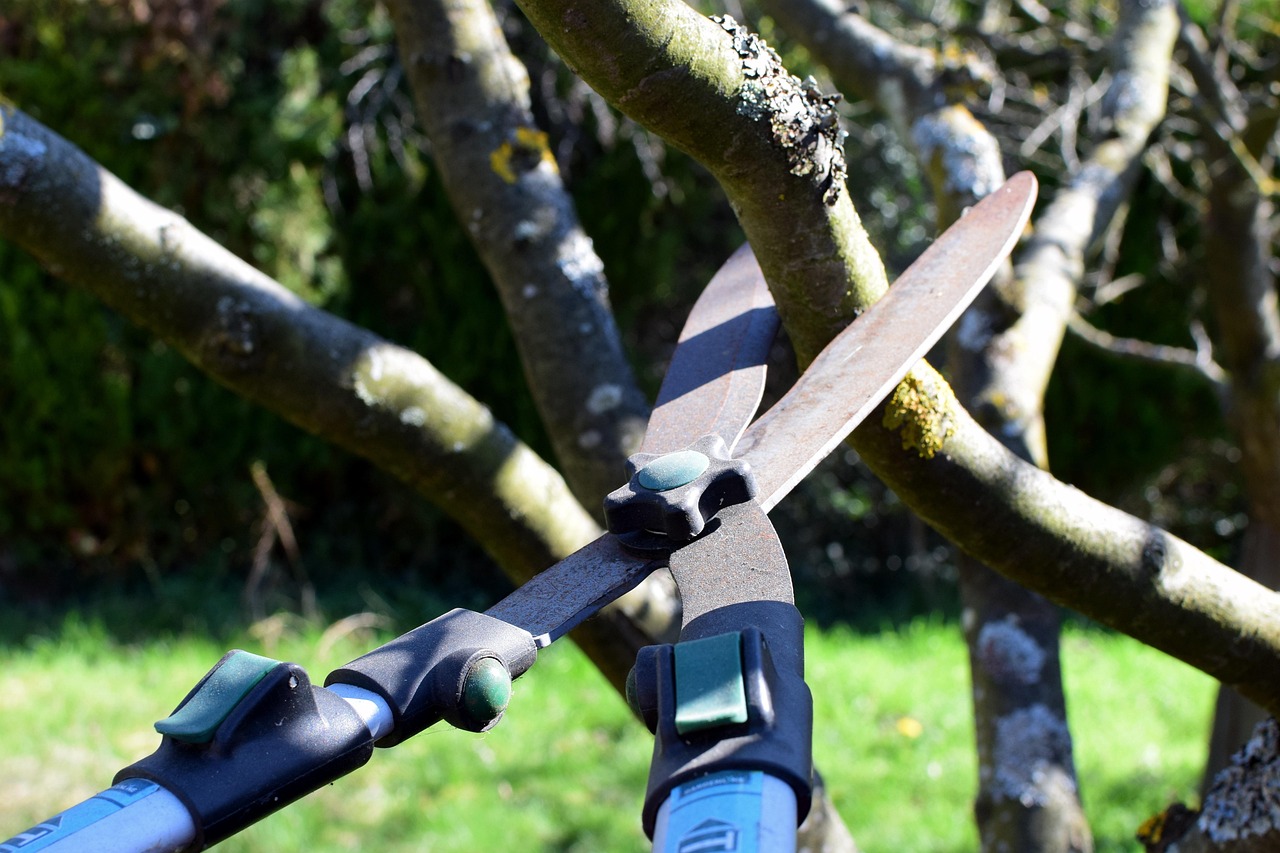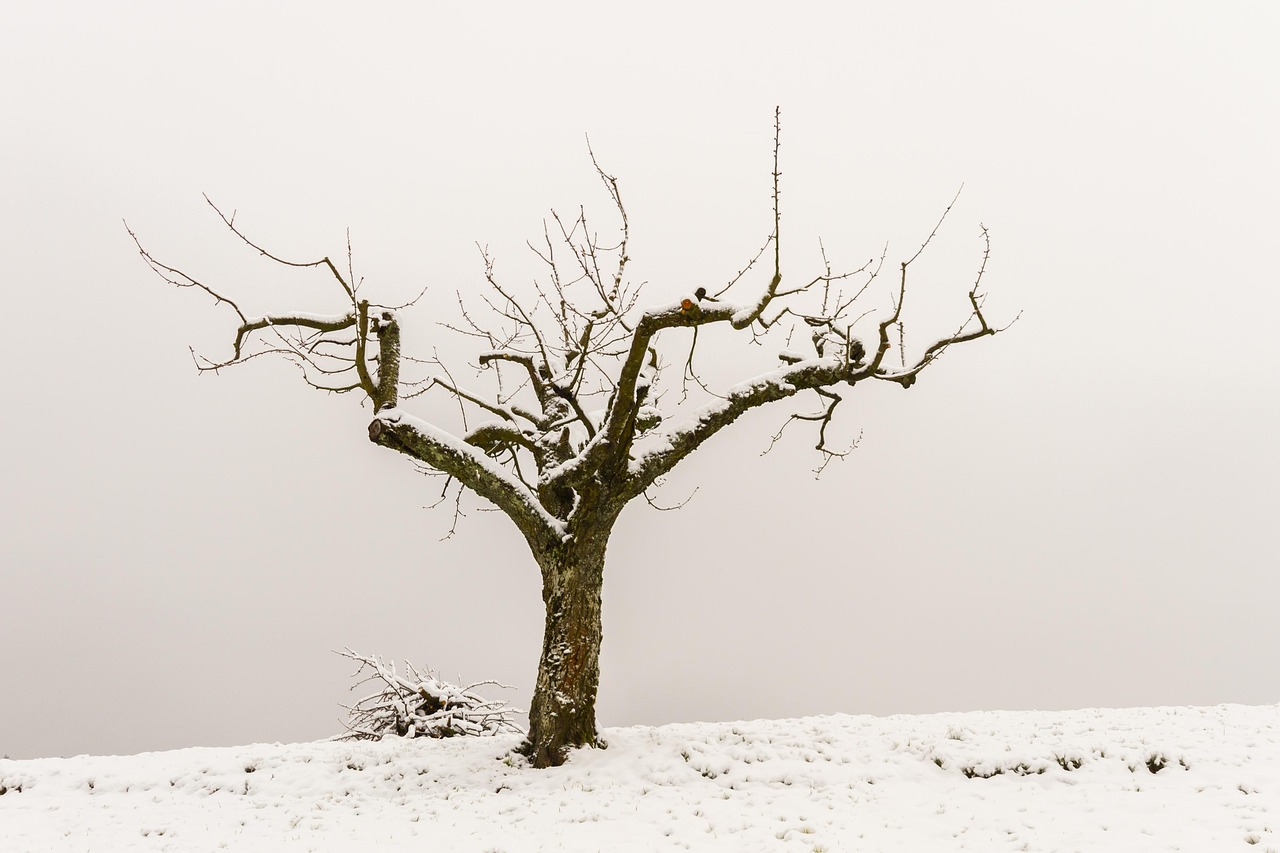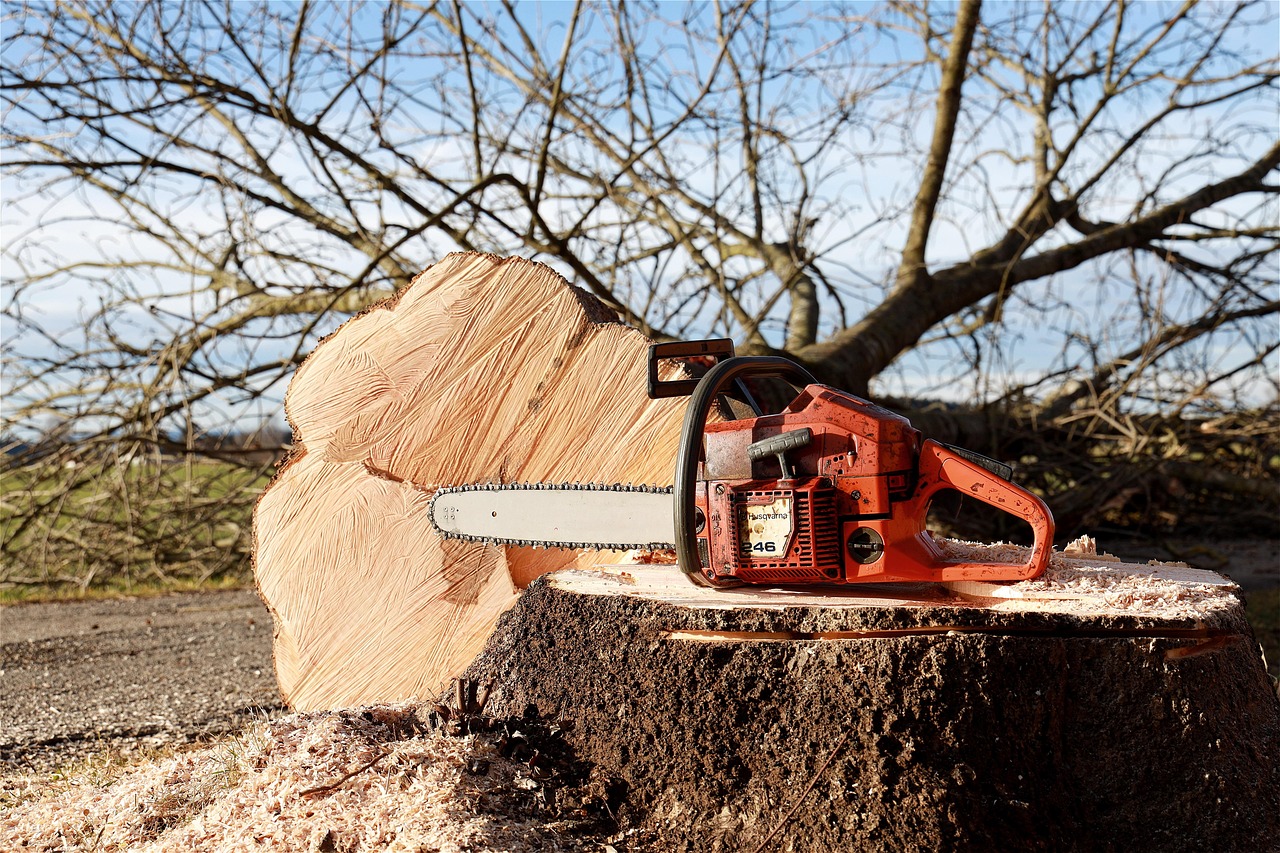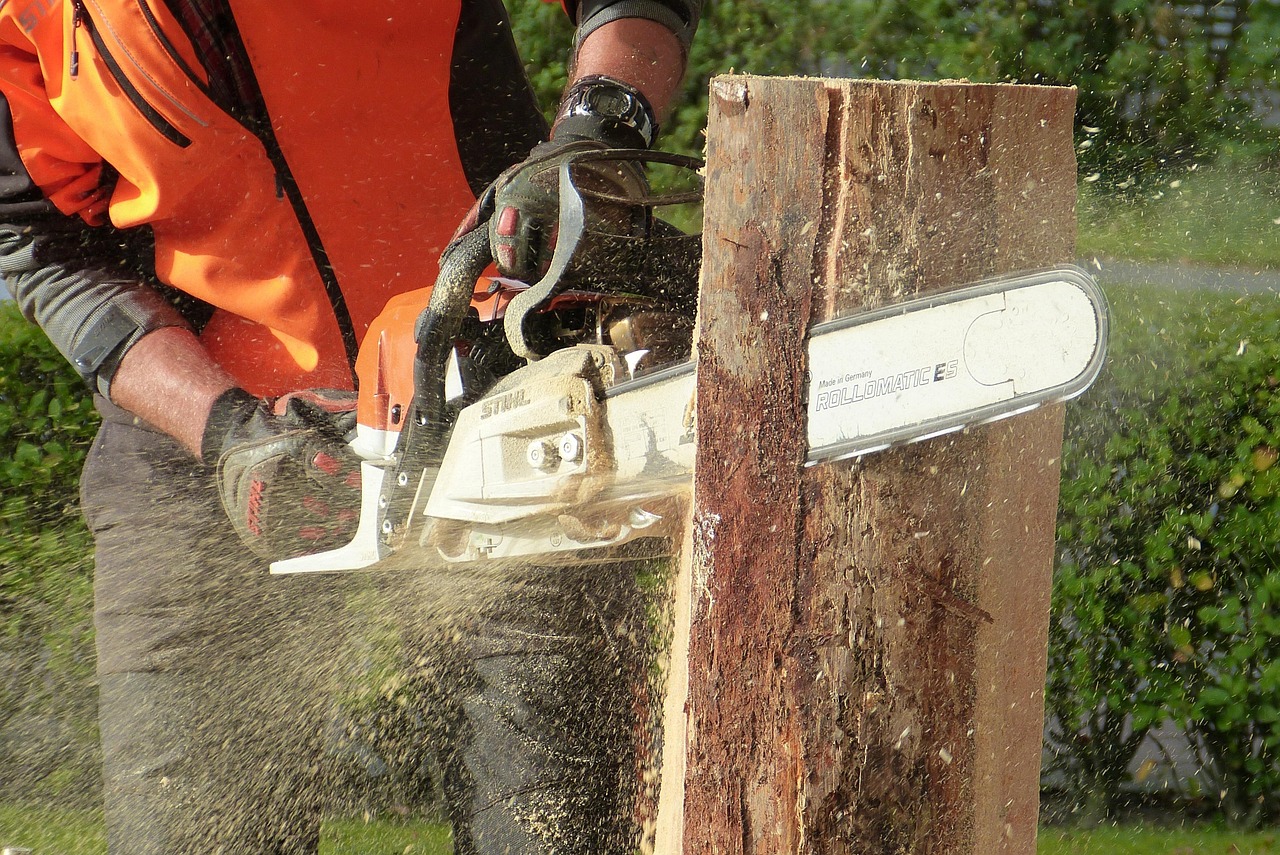Pruning indoor trees is crucial for space optimization and healthy growth. By carefully trimming branches and foliage, you control their size and shape, ensuring they fit comfortably in your home. It’s more than aesthetic—proper pruning improves air circulation, light penetration, and overall tree vitality, greatly enhancing your indoor environment.
Indoor plants have become increasingly popular for their ability to enhance the aesthetic appeal of a space. Trees, in particular, add a unique touch of nature to interiors. However, as these trees grow, they can take up significant space. Pruning is a vital practice that helps maintain their size and promotes healthy growth. Understanding how to properly prune indoor trees can lead to various benefits, including improved air circulation, better light penetration, and enhanced overall appearance.

There are several reasons to consider pruning your indoor trees. Some of the primary benefits include:
- Space Optimization: Keeps trees from becoming too large for their environment.
- Health Improvement: Removes dead or diseased branches, promoting better health.
- Enhanced Growth: Encourages new growth and improves overall tree structure.
- Aesthetic Appeal: Maintains a pleasing shape and size for indoor decor.
Understanding Indoor Tree Growth
Before diving into pruning techniques, it is essential to understand how indoor trees grow. Most indoor trees are tropical or subtropical species that thrive in warm, humid conditions. They often grow rapidly when provided with adequate light and water. However, this rapid growth can lead to overcrowding and an unwieldy appearance if not managed properly.
Many factors contribute to the growth of indoor trees, including:

- Light: Adequate sunlight is crucial for photosynthesis and healthy growth.
- Water: Over-watering or under-watering can stress the plant and lead to poor growth.
- Nutrients: A balanced fertilizer can support healthy development.
- Humidity: Most indoor trees prefer high humidity levels.
By understanding these factors, you can better manage your indoor tree’s growth through pruning. Regularly monitoring your plant’s health will also help you determine when and where to prune effectively.
When to Prune Indoor Trees
Timing is an important aspect of effective pruning. Each species of indoor tree may have specific needs regarding when to prune. Generally, the best time to prune is during the dormant season, which typically occurs in late winter or early spring. During this period, trees are not actively growing, making it easier for them to recover from pruning stress.
However, if you notice any dead or diseased branches at any time of year, it is advisable to prune them immediately. This helps prevent the spread of disease and encourages healthy growth. It is also crucial to consider the specific needs of your tree species; some may benefit from pruning at different times of the year.

Essential Pruning Techniques
There are several techniques to consider when pruning your indoor trees. Each method serves a specific purpose and can greatly influence the outcome of your efforts.
- Thinning: This involves removing entire branches to improve light penetration and air circulation within the tree.
- Heading Back: Cutting back branches to a bud or lateral branch encourages bushier growth.
- Pinching: This technique involves removing the tips of new growth to promote branching.
- Cleansing: Removing dead or damaged branches helps maintain overall health.
Each technique has its own set of advantages. Thinning can help reduce the density of foliage, allowing more light to reach inner leaves. Heading back and pinching promote a fuller appearance by encouraging lateral growth. Cleansing ensures that your tree remains free from potential diseases caused by dead material.
Tools Needed for Pruning
Having the right tools is essential for successful pruning. Using proper equipment helps make clean cuts that promote faster healing for the tree. Here are some basic tools you will need:

- Pruning Shears: Ideal for small branches and precise cuts.
- Loppers: Useful for thicker branches that cannot be cut with regular shears.
- Saw: A small pruning saw can help with larger branches.
- Gloves: Protect your hands while working with plants.
- Cleaning Solution: Rubbing alcohol or bleach to sanitize tools between uses.
Using sharp, clean tools will reduce the risk of damaging your tree and minimize the chances of spreading diseases. Proper maintenance of your tools is just as important as the pruning process itself.
Being knowledgeable about indoor tree pruning techniques will empower you to maintain a beautiful living space. By following these guidelines, you can ensure that your indoor trees remain healthy, attractive, and well-suited to your home environment.
Common Indoor Trees Suitable for Pruning
When considering indoor tree pruning, it’s essential to know which types of trees are suitable for indoor environments. Some species adapt well to living indoors and respond positively to pruning. Below is a list of popular indoor trees that benefit from regular maintenance:
- Fiddle Leaf Fig: Known for its large, glossy leaves, this tree thrives with proper pruning, helping to maintain its shape and size.
- Pothos: While more of a vine than a tree, it can be pruned to control its spread and promote bushier growth.
- Rubber Plant: This tree is hardy and responds well to pruning, encouraging a fuller appearance.
- Dracaena: Various species of Dracaena are popular indoors and can be pruned to manage their height.
- Parlor Palm: This palm can be pruned to remove dead fronds and encourage new growth.
Selecting the right type of indoor tree is crucial for effective space optimization. Each tree has unique care requirements, making it necessary to research before introducing one into your home.
Pruning Techniques for Different Tree Types
Different species of indoor trees require various pruning techniques. Understanding the specific needs of each type will help you achieve your desired look while promoting healthy growth. Here are some common indoor trees along with recommended pruning techniques:
| Tree Type | Recommended Pruning Technique | Notes |
|---|---|---|
| Fiddle Leaf Fig | Heading Back | Encourages bushiness and prevents legginess. |
| Pothos | Pinching | Promotes fuller growth by removing tip growth. |
| Rubber Plant | Thinning | Removes overcrowded branches for better light exposure. |
| Dracaena | Cleansing | Regularly remove dead leaves to maintain health. |
| Parlor Palm | Cleansing | Trimming dead fronds encourages new growth. |
Choosing the right technique for each tree type can significantly enhance their appearance and health. Knowing when and how to prune will lead to better outcomes for your indoor garden.
The Pruning Process: Step-by-Step Guide
Now that you understand the importance of pruning and the types of trees that benefit from it, let’s delve into a step-by-step guide on how to prune effectively. Following these steps will ensure a smooth process:
- Assess the Tree: Look for dead, damaged, or overcrowded branches. Determine which areas need attention.
- Gather Tools: Ensure you have all necessary tools ready and sanitized before starting.
- Make Clean Cuts: Use sharp tools to make clean cuts at a 45-degree angle. This helps prevent damage and disease.
- Focus on Shape: Prune with the goal of maintaining or enhancing the natural shape of the tree.
- Remove Weaker Growth: If branches are crossing or competing for space, remove weaker ones to allow stronger parts to thrive.
- Cleansing Care: After pruning, inspect the tree for any signs of stress or disease and address as necessary.
This systematic approach will help you manage your indoor trees effectively. By following these steps, you will ensure that your trees remain healthy while optimizing space in your home.
Post-Pruning Care
After you have completed the pruning process, providing proper care is essential for your tree’s recovery and continued growth. Here are some care tips to keep in mind:
- Avoid Overwatering: After pruning, your tree may need less water as it adjusts to its new shape.
- Monitor Light Exposure: Ensure that your tree is receiving adequate light after pruning. Adjust its position if necessary.
- Nutrient Boost: Consider using a balanced fertilizer a few weeks after pruning to support new growth.
- Avoid Fertilizing Immediately: Wait a few weeks before fertilizing to allow the tree to recover from the shock of pruning.
Caring for your indoor tree post-pruning will help it bounce back quickly and maintain its health. Observing its growth and making adjustments as needed will lead to long-lasting benefits.
Common Mistakes in Indoor Tree Pruning
While pruning can be beneficial, there are common mistakes that many people make. Avoiding these pitfalls will enhance your success:
- Neglecting Timing: Pruning at the wrong time can stress the tree and hinder growth.
- Poor Tool Maintenance: Using dull or dirty tools can cause harm to the plant and introduce diseases.
- Over-Pruning: Removing too much foliage can shock the plant and stunt its growth.
- Lack of Planning: Not having a clear plan for which branches to cut can lead to an unbalanced appearance.
Avoiding these common mistakes will make your indoor tree pruning efforts more effective and help maintain the health of your plants. Stay informed and continue learning about best practices for ongoing care and maintenance.
Environmental Factors Affecting Indoor Trees
Indoor trees thrive best in specific environmental conditions. To ensure the success of your pruning efforts, it is important to understand the factors that influence tree health and growth. These factors include light, temperature, humidity, and air circulation.
Light Requirements
Light is one of the most crucial elements for indoor tree growth. Different tree species have varying light requirements. Here are some general guidelines:
- Low Light: Trees like Snake Plant and ZZ Plant can thrive in low-light environments.
- Medium Light: Pothos and Dracaena prefer indirect sunlight and can adapt to moderate lighting.
- Bright Light: Fiddle Leaf Fig and Rubber Plant require bright, indirect light for optimal growth.
When pruning, consider the light needs of your tree. If a tree is not receiving adequate light, it may become leggy or sparse. Adjusting its location to a brighter spot can enhance its health post-pruning.
Temperature and Humidity
Most indoor trees thrive in temperatures ranging from 65°F to 75°F (18°C to 24°C). Sudden temperature fluctuations can stress the plant. Additionally, humidity levels play a significant role in their growth:
- Humidity Levels: Many indoor trees prefer humidity levels between 40% and 60%. Low humidity can cause leaf drop or browning edges.
- Temperature Extremes: Avoid placing trees near heating vents or air conditioning units, which can create harsh conditions.
To increase humidity, consider using a humidifier or placing a tray of water near the tree. This can help create a more suitable environment for recovery after pruning.
Air Circulation
Proper air circulation is essential for preventing diseases and pests. Stagnant air can lead to fungal infections. Here are some tips for improving air circulation around your indoor trees:
- Avoid Overcrowding: Ensure that your trees have sufficient space between them to allow for airflow.
- Ventilation: If possible, rotate your plants regularly to expose different sides to airflow.
- Use Fans: For larger indoor gardens, consider using small fans to promote air movement.
Pest and Disease Management
Indoor trees can be susceptible to various pests and diseases. A proactive approach to management is necessary to keep your plants healthy post-pruning.
Common Pests
The following are common pests found on indoor trees:
- Aphids: Small insects that feed on sap, leading to yellowing leaves.
- Spider Mites: Tiny pests that create webbing and cause leaf discoloration.
- Scale Insects: These pests appear as small bumps on branches and leaves.
- Mealybugs: White, cotton-like pests that also feed on plant sap.
If you notice any signs of pests, it is important to act quickly. Use insecticidal soap or neem oil as effective treatments. Regularly inspecting your trees will help catch infestations early.
Disease Prevention
Diseases can arise from various factors, including poor air circulation, overwatering, or inadequate light. Here are some common indoor tree diseases:
- Root Rot: Caused by overwatering or poorly draining soil, this disease leads to wilting and yellowing leaves.
- Powdery Mildew: A fungal infection characterized by white powdery spots on leaves.
- Leaf Spot: Fungal or bacterial infections that cause dark spots on leaves.
To prevent diseases, ensure that your trees are not overwatered and provide adequate air circulation. Regularly clean the leaves to remove dust and potential spores.
The Role of Fertilization in Tree Health
Fertilization plays a vital role in maintaining healthy indoor trees. Proper nutrition supports growth and recovery post-pruning. Here is what you need to know about fertilizing your indoor trees:
Types of Fertilizers
There are two main types of fertilizers used for indoor trees:
- Liquid Fertilizers: These provide immediate nutrients and can be easily absorbed by the plant. They are ideal for quick boosts during the growing season.
- Slow-Release Fertilizers: These provide nutrients over an extended period, making them convenient for long-term feeding.
When to Fertilize
The best time to fertilize indoor trees is during the growing season, typically in spring and summer. Here are some guidelines:
- Avoid Fertilizing Immediately After Pruning: Allow the tree to recover from pruning stress before adding nutrients.
- Monitor Growth: Fertilize when you notice new growth or if the leaves appear pale.
Nutrient Needs
The primary nutrients required for healthy growth include nitrogen (N), phosphorus (P), and potassium (K). Additionally, trace minerals such as magnesium and calcium are important for overall health. A balanced fertilizer with equal parts of N-P-K is generally suitable for most indoor trees.
Caring for your indoor trees involves understanding their environmental needs, managing pests and diseases effectively, and providing proper nutrition through fertilization. Keeping these factors in mind will enhance the success of your pruning efforts and the overall health of your plants.
Additional Tips for Successful Indoor Tree Pruning
As you continue to care for your indoor trees, consider these additional tips to enhance your pruning experience and improve your plants’ health:
Seasonal Adjustments
Throughout the year, your indoor trees may require different care strategies based on seasonal changes. Here are some adjustments to consider:
- Spring: This is the ideal time for major pruning and fertilization as trees begin their growth cycle.
- Summer: Monitor your trees closely for rapid growth; minor shaping may be needed.
- Fall: Reduce fertilization as growth slows down; prepare trees for dormancy.
- Winter: Limit pruning to only dead or diseased branches to avoid stressing the tree.
Record Keeping
Maintaining a record of your pruning activities can help you track the progress of your trees. Consider noting:
- The date of each pruning session.
- The specific branches or areas pruned.
- Any observations about tree health or growth patterns.
- Fertilization dates and types of fertilizers used.
This documentation will provide insight into what techniques work best for your trees and allow you to make informed decisions in the future.
Learning and Adapting
Each indoor tree is unique and may respond differently to pruning techniques. Continuous learning about your specific tree species will help you adapt your approach as needed. Consider joining gardening forums or reading books dedicated to indoor plant care. Engaging with others who share your passion can provide valuable insights and tips.
Final Thoughts
Indoor tree pruning is an essential practice for space optimization and overall plant health. By understanding the various techniques, tools, and environmental factors that impact tree growth, you can create a thriving indoor garden. Regular maintenance not only keeps your trees looking their best but also contributes to a healthier living environment within your home.
Key takeaways include:
- Identify tree species and their specific pruning needs to ensure effective care.
- Be mindful of environmental factors like light, temperature, humidity, and air circulation that affect growth.
- Implement proper pest and disease management strategies to maintain tree health.
- Utilize the right fertilization techniques to support recovery and stimulate growth following pruning.
- Keep a record of your pruning activities to track progress and make informed decisions.
By embracing these practices, you can enjoy the beauty and benefits of indoor trees while optimizing the space in your home. The journey of caring for indoor trees is rewarding, allowing you to connect with nature even within the confines of your living space. With patience and dedication, your indoor garden can flourish beautifully.
